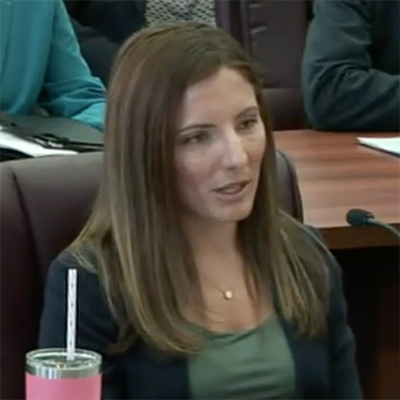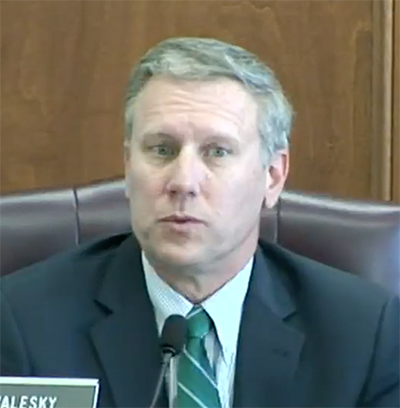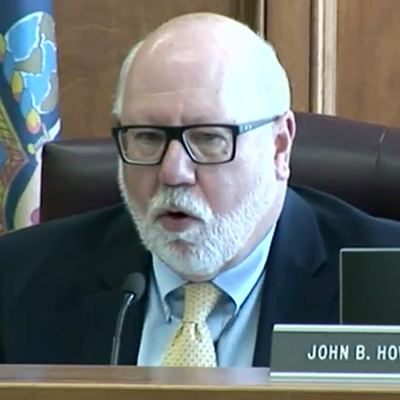Positive COVID-19 Test Prompts Return to Virtual Sessions
Multiple attendees at NERC’s Board of Trustees and Member Representatives Committee meetings this week praised the organization’s staff after a last-minute pivot from what would have been the groups’ first in-person gathering in more than two years into yet another virtual session.
The meetings — along with those of NERC’s Finance and Audit Committee, Technology and Security Committee, and Corporate Governance and Human Resources Committee — were to have been held on Wednesday and Thursday in Arlington, Va. (See “Face-to-face Meetings to Return in May,” NERC Board of Trustees/MRC Briefs: Feb. 10, 2022.) However, after an attendee tested positive for COVID-19 at the conference site Tuesday morning, NERC announced that all events would be held virtually, following up with webconference links the same day.
Speaking at the MRC meeting on Wednesday, Board Chair Ken DeFontes acknowledged that the events of the past two days were another reminder of the ongoing pandemic. He said NERC still intends to hold the August and November meetings in Vancouver, Canada, and New Orleans, respectively, though with appropriate precautions in place.
“There’s no question that we’re not done with COVID yet, and we saw the evidence of that this week,” DeFontes said. “So we are thinking about how we can shape that meeting to encourage people to come, but at the same time be prepared in the event that we have to do another virtual setup, maybe even try to look at some hybrid options.”
Standards Actions
The board voted to approve the new reliability standards FAC-001-4 (Facility interconnection requirements) and FAC-002-4 (Facility interconnection studies), bringing to an end the work of Project 2020-05.
The project began nearly two years ago with the aim of modifying FAC-001-3 and FAC-002-3. The former standard requires transmission owners and generator owners to “document and make facility interconnection requirements available,” while the latter requires GOs to “study the impact of interconnecting new or changed facilities on the bulk electric system.”
At issue with the standards was the term “materially modified,” which both FAC-001-3 and FAC-002-3 implied should be used to determine what facility changes should be studied and which should not. However, neither standard said who would determine what counts as a material modification. The existing language also created confusion with FERC’s open access transmission tariff implementation, because in FERC-jurisdictional areas, “material modification” means the impact of a new generation project on other generators in the interconnection queue.
To address these issues, the revised standards replace the phrase “materially modified” with “qualified change” throughout. In addition, a new requirement in FAC-002-4 specifies that the planning coordinator will define what constitutes a qualified change and will make the definition publicly available.
After the board accepted the new standards, Howard Gugel, NERC’s vice president of engineering and standards, delivered an update on Project 2021-07, which NERC began last year in response to the joint FERC-NERC report on the winter storms that knocked thousands of megawatts of capacity offline in Texas and the Midwest. (See NERC Standards Committee Agrees to New Cold Weather Project.)
According to Gugel, the standard drafting team (SDT) has completed an initial draft of the new standards and plans to submit it to the Standards Committee at its meeting next week for initial formal comment and ballot period. The SDT is further requesting that the comment period be reduced to 30 days from the standard 45, in hopes of finishing the standard and submitting it to FERC for approval as soon as possible.
Summer Assessment Highlights Risks in Texas, West
Large parts of North America face “elevated or high risk of energy shortfalls during peak summer conditions,” according to NERC’s upcoming Summer Reliability Assessment, due to be released next week. NERC staff previewed the assessment, along with the 2022 Long-term Reliability Assessment, during Thursday’s board meeting.
As Mark Olson, NERC’s manager of reliability assessments, explained, droughts and heat events are a major concern across the Western Interconnection and Texas.
In WECC’s footprint, these risks take the form of depleted water resources for hydroelectric generators, as well as “another active wildfire season,” Olson said. Extreme heat in Texas raises the potential for demand-related shortfalls, while thermal generators may face challenges in SPP because of lowered river water levels.
MISO faces potential shortages because of a 2.3% reduction in generation capacity since last year. Olson said extreme temperatures, high generation outages or low wind conditions could lead to outages even at normal peak demand. The assessment rates the region as the highest risk in North America.
New Québec Agreement Approved
The board also approved revisions and amendments to the agreement between NERC, the Northeast Power Coordinating Council and Québec’s Régie de l’énergie.
The existing agreement, originally approved in 2014, spells out how NERC’s Compliance Monitoring and Enforcement Program (CMEP) activities will be carried out in the Canadian province, along with establishing a Québec-specific CMEP (QCMEP). NERC, NPCC and the Régie agreed to modify the document in 2020.
The new agreement includes the following changes:
-
- NPCC, NERC and the Régie may update the QCMEP without seeking approval from Québec’s government.
- Duplicative terms have been removed, along with specific processes that are already addressed in the QCMEP.
- Another regional entity may take over NPCC’s responsibilities if it dissolves or otherwise cannot perform them.
- Billing of simultaneous interpretation as needed for audits is permitted.
- A mediation and arbitration clause was added.
NERC also said the agreement contains unspecified “other administrative changes.” With the board’s approval, all that is left for the document to take effect is the acceptance of Québec’s authorities.


